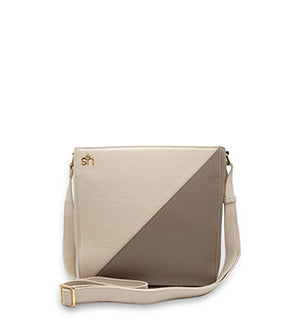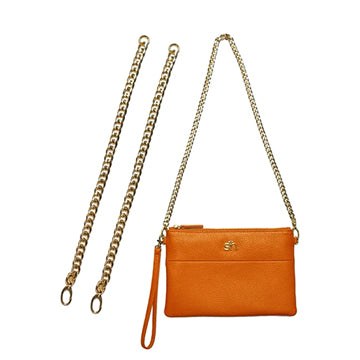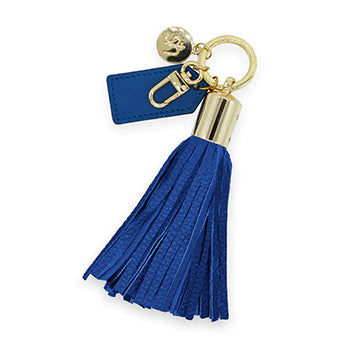How Italian Leather is Made: A Step-by-Step Guide

Quick Listen:
Italian leather is synonymous with luxury, sophistication, and timeless style. Its reputation for high quality is not a coincidence but the result of centuries of tradition and meticulous craftsmanship. The process of making Italian leather involves a blend of nature, skill, and artistry, creating a product that is both durable and elegant. In this guide, well walk through the step-by-step journey of how Italian leather is made, from sourcing the finest hides to the final handcrafted products.
1. Sourcing Premium Hides
The journey of Italian leather begins with sourcing the highest-quality hides. Italy is known for its tradition of selecting only the best raw materials, which are typically sourced from top-tier farms in Europe, especially from countries like Italy, France, and Spain. The hides used in Italian leather products usually come from cows, though goats, pigs, and sheep are also used for specific types of leather.
The key to premium leather starts at the source: the health and living conditions of the animals. Cattle raised in natural environments, free from excessive scars and imperfections, produce higher-quality hides. The hides are then carefully inspected for any defects, such as blemishes, cuts, or insect bites, that could affect the final products appearance and durability.
The selection of hides plays a crucial role in the overall quality of the leather. Only the best, smoothest hides are chosen to create the luxurious and smooth leather that Italian products are known for.
2. Preparation and Cleaning
Once the hides are carefully chosen, the next step in the process is cleaning and preparing the leather. In this stage, any residual flesh, hair, or fat is removed. This step ensures that the leather is free from impurities that could compromise its quality.
The hides are first soaked in water, which helps to soften them and loosen any dirt or contaminants. They are then treated with natural soaps to remove grease and other residues that can affect the leathers texture and appearance. After cleaning, the hides are thoroughly dried, often in a controlled environment to avoid any cracks or wrinkles.
The preparation phase also involves trimming the edges and removing any parts of the hide that may have imperfections. The remaining leather is then ready for the tanning process, which is where the magic of Italian leather truly begins.
3. Tanning: The Heart of the Process
Tanning is the process that transforms raw animal hides into durable, flexible leather. It is a crucial stage in the leather-making process, as it determines the leathers color, texture, and longevity. Italian tanners are known for their use of vegetable tanning, a traditional and eco-friendly method that results in a leather with rich, natural hues.
Vegetable Tanning
Vegetable tanning is a time-consuming process that uses tannins found in plant materials, such as oak bark, chestnut, or hemlock. The process involves soaking the hides in vats filled with tannin-rich liquids, sometimes for weeks or even months. This slow and natural process allows the leather to absorb the tannins, which preserve the hide and give it its characteristic color and durability.
Vegetable-tanned leather is prized for its natural beauty, which evolves over time. As the leather ages, it develops a patina, which is a unique characteristic that adds to its charm. The rich, deep tones that result from vegetable tanning are also a hallmark of Italian leather.
Chrome Tanning
In addition to vegetable tanning, some Italian leather makers also use chrome tanning, a faster process that results in a more consistent color. This method uses chromium salts to tan the hides, making the leather more pliable and quicker to produce. While chrome-tanned leather does not develop the same patina as vegetable-tanned leather, it is often used for more delicate items that require a softer, more supple finish.
Both vegetable and chrome tanning methods are widely used in Italy, depending on the desired end product. However, vegetable tanning remains the traditional and most prestigious method in Italian leather production.
4. Dyeing and Conditioning
Once the leather is tanned, it undergoes the dyeing process to achieve its final color. Italian artisans use both natural and synthetic dyes to create a broad spectrum of shades. The dyeing process is critical, as it not only enhances the aesthetic appeal of the leather but also helps to condition and preserve it.
Natural Dyes
In the traditional Italian leather-making process, natural dyes derived from plants and minerals are often used. These dyes are favored for their subtle, deep tones and eco-friendly qualities. The leather is carefully soaked in dye baths, ensuring the color is evenly absorbed.
Synthetic Dyes
Synthetic dyes, on the other hand, can provide more vibrant and consistent colors. While synthetic dyes are used in some cases, they are often combined with natural techniques to achieve the perfect finish. The choice of dye depends on the final look desired, whether its a rich, earthy tone or a more modern, uniform color.
After dyeing, the leather is carefully conditioned with oils and waxes to restore its suppleness and moisture. This step is essential to prevent the leather from becoming brittle or dry, ensuring it remains soft and flexible over time.
5. Crafting and Finishing
Once the leather has been tanned and dyed, the final step is crafting and finishing. Italian leather is known for its handcrafted quality, and this stage is where skilled artisans bring the leather to life.
Cutting and Shaping
The first step in the crafting process is cutting the leather into the desired shapes and sizes. Whether its for shoes, bags, jackets, or furniture, each piece of leather is carefully measured and cut with precision. This step requires a keen eye for detail, as the craftsman must ensure that the grain of the leather aligns properly and that the piece is free of imperfections.
Stitching and Assembling
Once the leather pieces are cut, the artisan begins stitching them together. In Italy, hand stitching is often preferred for its strength and visual appeal. Skilled leatherworkers use traditional techniques to ensure each stitch is perfectly aligned, resulting in a seamless finish. Machines may also be used for certain tasks, but the emphasis is always on precision and quality.
Edge Finishing
The edges of the leather are carefully smoothed and sealed to prevent fraying. This process, known as edge finishing, is a hallmark of Italian leather craftsmanship. The edges are typically burnished with a special tool and then coated with a wax or lacquer to create a polished, professional look.
Final Inspection
The final product undergoes rigorous inspection to ensure it meets the high standards of Italian leather goods. Each piece is checked for imperfections in stitching, color consistency, and overall finish. Only the best products are allowed to leave the workshop, ensuring that Italian leather retains its reputation for excellence.
6. Patina and Aging
One of the most distinctive features of high-quality Italian leather is its ability to develop a beautiful patina over time. As the leather ages, it reacts to exposure to light, air, and oils from the skin, gradually changing in color and texture. This natural aging process adds character and uniqueness to the leather, making each piece one-of-a-kind.
Leather goods that are made from vegetable-tanned leather, in particular, tend to develop the most remarkable patinas. Over time, the leather will become darker, richer, and more supple, resulting in a deep, lustrous finish that reflects the history and care embedded in the leather.
Symbol of Elegance
The process of making Italian leather is a meticulous and highly skilled craft that has been perfected over centuries. From the careful selection of hides to the time-intensive tanning, dyeing, and handcrafting processes, Italian leather represents the pinnacle of luxury and quality. The result is a product that not only looks beautiful but also withstands the test of time, developing a unique patina that tells the story of its journey.
Whether used in high-end handbags, shoes, jackets, or furniture, Italian leather remains a symbol of elegance and craftsmanship. Each step in the process is a testament to the skill of Italian artisans, who have turned leather into an art form. The next time you admire a piece of Italian leather, remember the rich history and craftsmanship behind it, making it more than just a materialits a piece of living history.
You may also be interested in: Tassel Collection Swatzell + Heilig
Indulge in the craftsmanship of attainable luxury Italian leather. Exclusive designs and impeccable functionality, handcrafted to last a lifetime. Shop the Swatzell + Heilig's fashion collection now!
Powered by flareAI.












